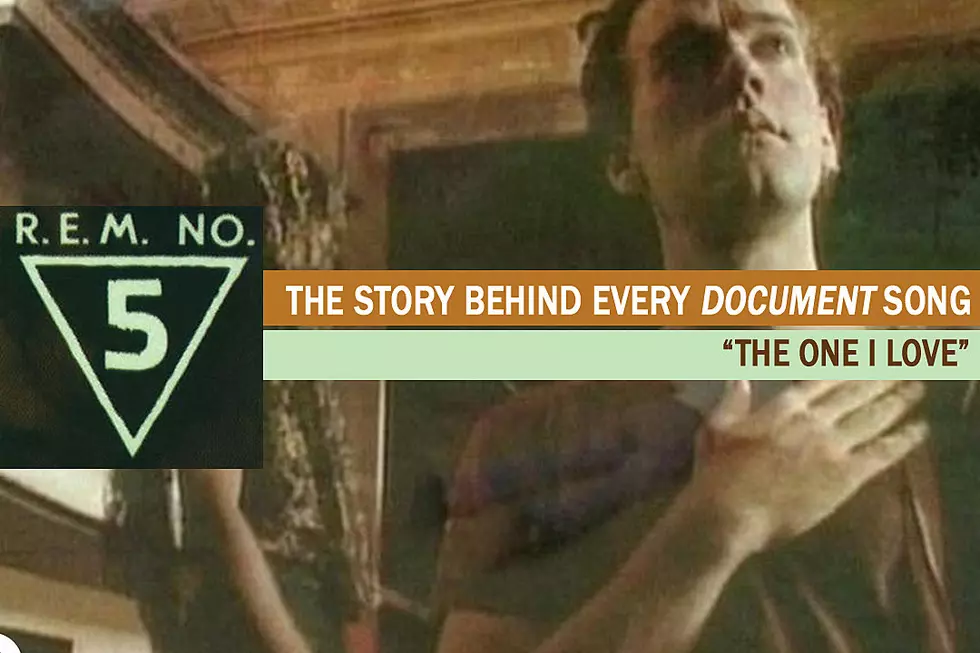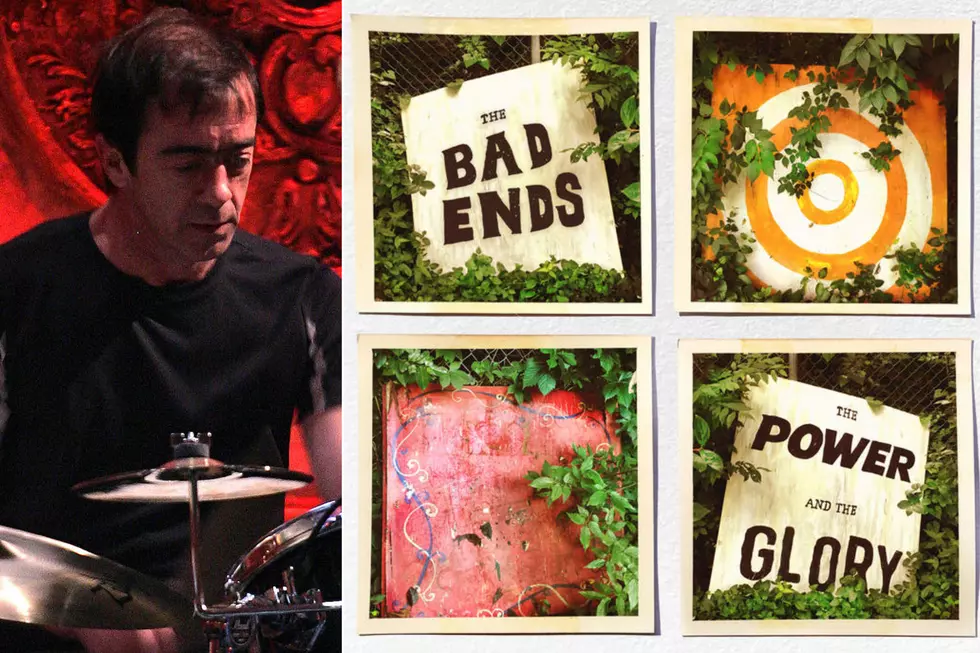
How R.E.M. Scored a Big Hit With the Brutal ‘The One I Love’
If Document was the turning point for R.E.M., then “The One I Love” served as the hinge. Released as the lead single of their fifth LP in August 1987, the song became R.E.M.’s first Top 10 hit by the end of that year.
Even in the context of the album, “The One I Love” marked something of a demarcation line. While the tracks on side one were united by political thoughts (or, at least, implications) related to the state of America in 1987, side two (kicked off by this song) was a stranger, more eclectic musical experience. It was a counter-balance to the jackhammer cohesion of the other half, which was probably the closest R.E.M. ever got to making a concept record.
The first song on side two was an incredible shift from the final tune on side one – “It’s the End of the World as We Know It (And I Feel Fine).” These would become the two singles, the twin radio songs off of Document, but they couldn’t be more different, at least from a lyrical approach. In contrast to the litany of calamities and references that he shuffled like a Las Vegas blackjack dealer on “It’s the End,” singer Michael Stipe went spartan on “The One I Love.”
The song has three verses, which are all identical except a key word in the third go-round. It has a one-word chorus (if you don’t count bassist Mike Mills’ backing contribution). Stipe only sings 20 different words in the course of a three-minute song – compared to “It’s the End … ,” in which he passes the 20-word mark in the first 15 seconds.
Watch R.E.M.'s 'The One I Love' Video
“The One I Love” is plotted out like this. At first, Stipe sounds like he’s making a nod to the Shirelles (or the Mamas and the Papas): “This one goes out to the one I love.” Then it’s revealed the subject is not a current lover, but a former one: “This one goes out to the one I left behind.” And then, there’s the turn: “A simple prop to occupy my time.” The first line is repeated to the listener, not with the understanding that this is not a loving gesture, but something bitter, ironic or cynical.
So from where did this tightly wound blast of dark poetry come from? “I don’t know. That song just came up from somewhere, and I recognized it as being real violent and awful,” Stipe told Rolling Stone in ’87. “But it wasn't directed at any one person. I would never, ever write a song like that. Even if there was one person in the world thinking, ‘This song is about me,’ I could never sing it or put it out.”
The track’s lyrical straightforwardness was matched, in some ways, by its musical simplicity. One writer called “The One I Love”’s short guitar solo “borderline rudimentary.” In typical R.E.M. fashion, the instrumental portion came before the lyrics. Guitarist Peter Buck came up with the riff on his front porch.
“I remember Peter, showing me that riff and thinking it was pretty cool, and then the rest of the song flowed from there,” Mills told Uncut. “We played the whole song as an instrumental until Michael came up with some vocals for it.”
Stipe delivered the lyrics, including the howled eruptions of “Fire!” in the chorus, with a dark edge. Fire tied into a recurring theme in Document, representing passion, anger, or even unrepentant destruction (as in “Welcome to the Occupation”). The song following “The One I Love” is titled “Fireplace.” And the members of “Oddfellows Local 151” meet behind the firehouse. It’s no wonder that Document was listed as “File Under Fire” on its record sleeve (just as Reckoning had “File Under Water” printed on it).
As R.E.M. released their fiery single just ahead of their latest (and final) album for independent label I.R.S., “The One I Love” began to draw radio programmers’ attention as no R.E.M. single had before. Although the band had released singles before, only three had made the Billboard Hot 100, none higher than a brief tenure at No. 78. It wasn’t a facet of the music industry that had greatly concerned the band.
“We don’t really worry about that. We just do the records and give ’em to the record company and say ‘do what you can, sell this,'” Mills told Toronto’s Globe and Mail as “The One I Love” was picking up momentum. “Being the number two most-added single is kind of nice. I mean, we’re not a band that writes hit singles, but I suppose if we’re going to do this we might as well we have one.”
While R.E.M. wasn’t attempting to become more commercial, the group’s sound had become clearer and more direct on this album and the one previous, Lifes Rich Pageant. Stipe’s vocals had been pushed into the front and Bill Berry’s drumming was recorded with an ear for crisp percussion. That ear belonged to co-producer Scott Litt, who was working on his first of six R.E.M. albums. If the band didn’t have their aims set on a hit single, Litt confessed that it was part of his plan.
"With R.E.M., I thought it was important to show that the music belongs on the radio, that it was every bit as worthy as Whitney Houston or whatever else was on there,” Litt told the Chicago Tribune. “It was against my nature to do something murky – as opposed to raw – and basically I wanted to treat their vocals differently on Document. They weren’t really a great singles band then, but they became one, beginning with ‘The One I Love’ on that album. It’s a very linear song: the vocal stops, then you hear the drums, then the guitar comes in and takes your interest.”
In the decade after “The One I Love,” the partnership between R.E.M. and Litt would result in 14 songs that made the Billboard singles charts– three of them in the Top 10 – and multiple albums that either topped the U.S. album charts or came close. But with increasing popularity sometimes comes confusion. It seemed that a rash of listeners heard “The One I Love”’s distinctive riff and first lyric and stopped paying attention. Callers would phone DJs to dedicate the tune to their dearest.
“I didn’t like the song to begin with,” Stipe told Mojo in 2016. “I felt it was too brutal. I thought the sentiment was too difficult to put out into the world. But people misunderstood it, so it was fine. Now it’s a love song, so that’s fine.”
For a song that its lead singer hated, at least initially, “The One I Love” remains one of R.E.M.’s signature tunes. It’s been featured on every “best-of” compilation that includes the band’s I.R.S. years and was R.E.M.’s most frequently played set list entry in their live shows until the end of their career. It remains a modern and classic rock radio staple to this day.
Top 100 '80s Rock Albums
More From Ultimate Classic Rock










